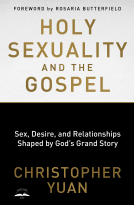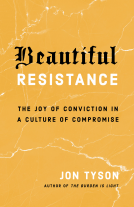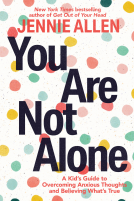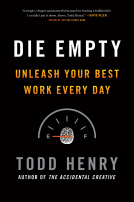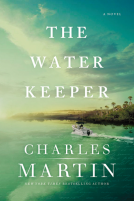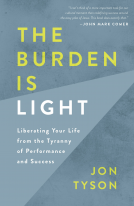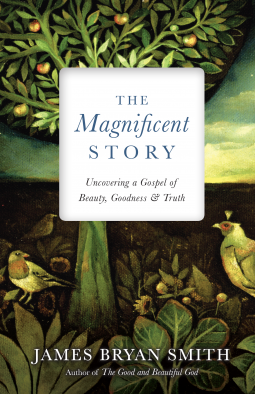
The Magnificent Story
Uncovering a Gospel of Beauty, Goodness, and Truth
by James Bryan Smith
This title was previously available on NetGalley and is now archived.
Send NetGalley books directly to your Kindle or Kindle app
1
To read on a Kindle or Kindle app, please add kindle@netgalley.com as an approved email address to receive files in your Amazon account. Click here for step-by-step instructions.
2
Also find your Kindle email address within your Amazon account, and enter it here.
Pub Date Aug 07 2017 | Archive Date Sep 06 2017
InterVarsity Press | IVP Books
Description
What is the story you have been told about the gospel? We need stories, or narratives, to make sense of our world, and those stories in turn shape our lives.
James Bryan Smith, author of the bestselling book The Good and Beautiful God, brings us this spiritual formation resource to help both individuals and groups understand the Magnificent Story of Christ in their lives.
Any story worth giving the power to shape our lives must pass a simple
test: is it beautiful, good, and true? If it is, then it is a
magnificent story—and that is where transformation takes place.
Advance Praise
"If Dostoevsky is right in making the observation that 'beauty will save the world,' then James Bryan Smith has provided us with an exquisite exposition of what this means and how beauty is revealed in the God story. And he does so without in any way downplaying the deep fragmentation of our world; to the contrary, Smith demonstrates that it is precisely against the backdrop of this deep pain that we see and know the beauty of God and thus the salvation of God."
—Gordon T. Smith, president, Ambrose University, Calgary, Alberta, author of Called to Be Saints
"Currently, James Bryan Smith is the best
author I know for blending essential spiritual insight with fruitful
spiritual practices. In The Magnificent Story, Jim is characteristic: by giving us
spiritual practices that help us abandon our shriveled life stories, he
helps us to sync our lives up to the good, beautiful, and true story of
God—and become human as God intended."
—Todd Hunter, Anglican bishop, Churches for the Sake of Others
"What story do you believe you are living in? No question is more important—or more frequently ignored, to the detriment of humanity. The vast totality of our afflictions—in the face of our deepest longings—is in no small part a reflection of the stories in which we believe we live, witting or not: stories that are the antitheses of goodness, beauty, and truth. But thanks be to God, with The Magnificent Story, James Bryan Smith has drawn back the curtain on the real cosmic drama in which we find ourselves. And if ever the plots of the stories of our lives have needed this book, that time is now. If you hunger for goodness, beauty, and truth, and moreover, if they have felt out of your story's reach, do not despair. For within these pages lies the chronicle your life has been waiting to read, to hear, to live."
—Curt Thompson, author of Anatomy of the Soul and The Soul of Shame
Available Editions
| EDITION | Hardcover |
| ISBN | 9780830846368 |
| PRICE | $22.00 (USD) |
| PAGES | 192 |
Links
Average rating from 5 members
Featured Reviews
 Conrade Y, Reviewer
Conrade Y, Reviewer
The Bible has sometimes been referred to the Story of stories. It tells of a Big Story that we are all part of. Stories have a way of revealing life as they are without the need to explain every little detail. Stories are less about facts but more about life as they are. They could be dissected and analyzed but stories go beyond the dimensions of exegesis and analysis. They are pregnant with meaning and spiritual significance. For author James Bryan Smith, these stories are also opportunities for spiritual formation. According to Smith, there are four ways to use these stories individually. We can prepare a notebook with empty pages to be ready to answer questions. We can read each chapter thoroughly to let the content seep into our hearts. We can do the weekly soul training exercises. We can journal our reflections on the notebook. He encourages us to use the content to interact, to encourage, and to connect with others to make the writing of our own stories as part of our communities. We cannot do this on our own. The best way forward is to be formed into the likeness of Christ, which is what the magnificent story is all about. This magnificence is described in three ways. It is beauty magnified; goodness magnified; and truth magnified. These are the "three transcendentals" to help us live out the divine story of our lives.
After showing us the high bar of spirituality, he then exposes the low bar of sin. Our fallen nature has rendered us falling for stories that are smaller than the real one. False stories such as the works-based gospel which reduce us to religious people focused merely on doing good works; the shame-blame gospel that scares us into submission; and all of these false gospels. These are not the stories we ought to build ourselves upon. They are false narratives or "shrunken stories." We need to anchor our stories on the Trinity and to see the three transcendentals are asserted together, yet are different. These have elements of participation and community. He points out the problems of false narratives again for anyone rejecting the Trinity. Throughout the book, these three transcendentals stand out as the author probes:
Is it beauty?
Is it good?
Is it true?
This book is important for three reasons. First, it helps us see our identities as being part of a bigger story. Our personal stories cannot be isolated from the bigger story. I am often curious about the word 'history.' It seems like a merging of two words: 'his' and 'story.' It is thus important that part of our own story could be traced back to our history and our background contexts. Second, it does not settle for false narratives. It insists we affirm all three transcendentals as much as we affirm God as Trinity. In fact, ancient heresies often deny the Trinity in some way. There is no laziness allowed for spiritual formation. One needs to embark on the soul training to learn to see the three perspectives of the magnificent story, and to see them as one unifying whole. The exercises in each chapter facilitates our progress in this area. Finally, it leads us forward to cultivating our relationship with Christ. This is beyond words or instructions only but is beneficial when we actually put the exercises to the test, to put ourselves to the demands of spiritual formation. There is the use of our five senses of sight, sound, smell, touch, and taste to bring together the three transcendentals. Our eyes train to see Jesus's smile in the light of earthly beauty. Our ears learn to listen out for sounds of beauty amid the noises around us. We let smells captivate us and point us toward our relationship God. We learn to touch and to be touched by God. We exercise our taste fore the goodness of God all around us. At times, the exercises do seemed forced. That is why the exercises cannot be a one-off endeavour. Practitioners will come back to the exercises to do it multiple times on different occasions.
Overall, this is a book about spiritual formation, engaging our five senses from a spiritual perspective, and honing our Christian practices toward the three transcendentals of beauty, goodness, and truth. Eloquently written with lots of examples and exercises, this book is a helpful resource for anyone interested in the practice of spiritual formation.
James Bryan Smith is a theology professor at Friends University in Wichita, KS and a writer and speaker in the area of Christian spiritual formation. He also serves as the director of the Christian Spiritual Formation Institute at Friends University. He is also author of a very popular Apprentice series on spiritual formation and executive director of Apprentice Institute.
Rating: 4.5 stars of 5.
conrade
This book has been provided courtesy of Inter-Varsity Press and NetGalley without requiring a positive review. All opinions offered above are mine unless otherwise stated or implied.
Readers who liked this book also liked:
Harold Earls, IV; Rachel Earls
Biographies & Memoirs, Parenting, Families, Relationships
